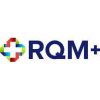Last month we launched Part II of the ISO 13485 IQ test. Check out how well you and the rest of the test takers performed below.
- In ISO 13485:2016, management is required to conduct annual reviews of the organization’s quality management system. FALSE – Only 25% answered correctly.
- In ISO 13485:2016, is the management representative allowed to delegate their responsibility to report the performance of the quality management system to top management? FALSE – Just 54% got this right.
- When an organization outsources any process that affects product conformity to requirements, the supplier must monitor and ensure control over such processes, with controls that are proportionate to the risk involved. FALSE – Gasp, only 6% answered correctly.
- Because ISO 13485 was originally based on ISO 9001, organizations that have demonstrated conformity to the requirements of ISO 13485:2016 have also demonstrated conformity to ISO 9001:2015. FALSE – Congrats, 84% answered correctly.
- To explain further, ISO 13485:2016 excludes some of the requirements of ISO 9001:2015 that are not appropriate as regulatory requirements. Because of these exclusions, organizations whose quality management systems conform to ISO 13485 cannot claim conformity to ISO 9001 unless their quality management system meets all the requirements of ISO 9001.
- To be compliant with ISO 13485, purchased product from sister companies must be verified to ensure it meets specified purchase requirements. TRUE – 90% answered correctly.
- Who is responsible for ensuring that customer requirements are determined and met?
- Top management. 82% got this right. Top management must ensure that customer requirements are determined and met.
- Engineering
- Sales & marketing
- Regulatory affairs
- What is the first step of product realization?
- Planning. Answer “a” is correct: The output of this planning must be in a form suitable for the company’s method of operations.. However, respondents were evenly split at 49% for “a” and “c”.
- Implementing improvement activities
- Determining customer requirements
- Determining purchasing requirements
- Risk management is a subset of the product realization process, and its key elements, risk assessment and risk control, are used to establish design input and design output requirements. FALSE – Only 14% answered correctly. Risk management is not a subset of product realization, as its output can and does influence decisions and activities outside of the area of product realization. For example, management review decisions, personnel training, infrastructure, and many other elements can be significantly influenced by information derived from the output of risk management activities







